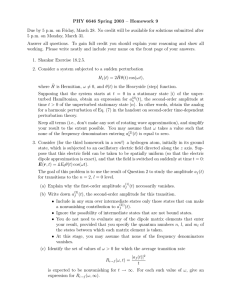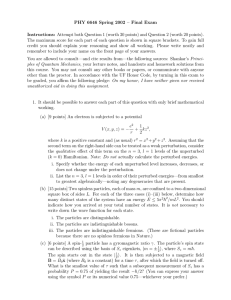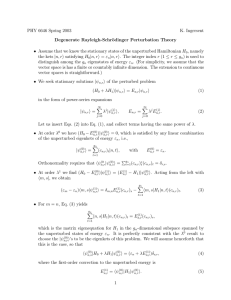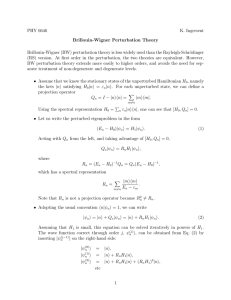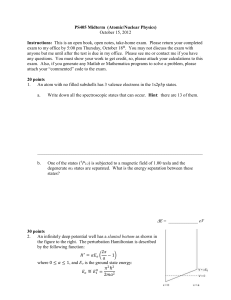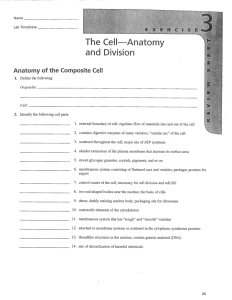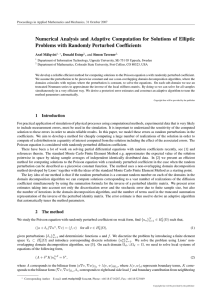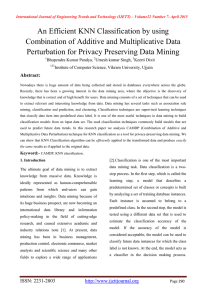Physics 212 Problem Set One 1. Perturbed Square Well
advertisement
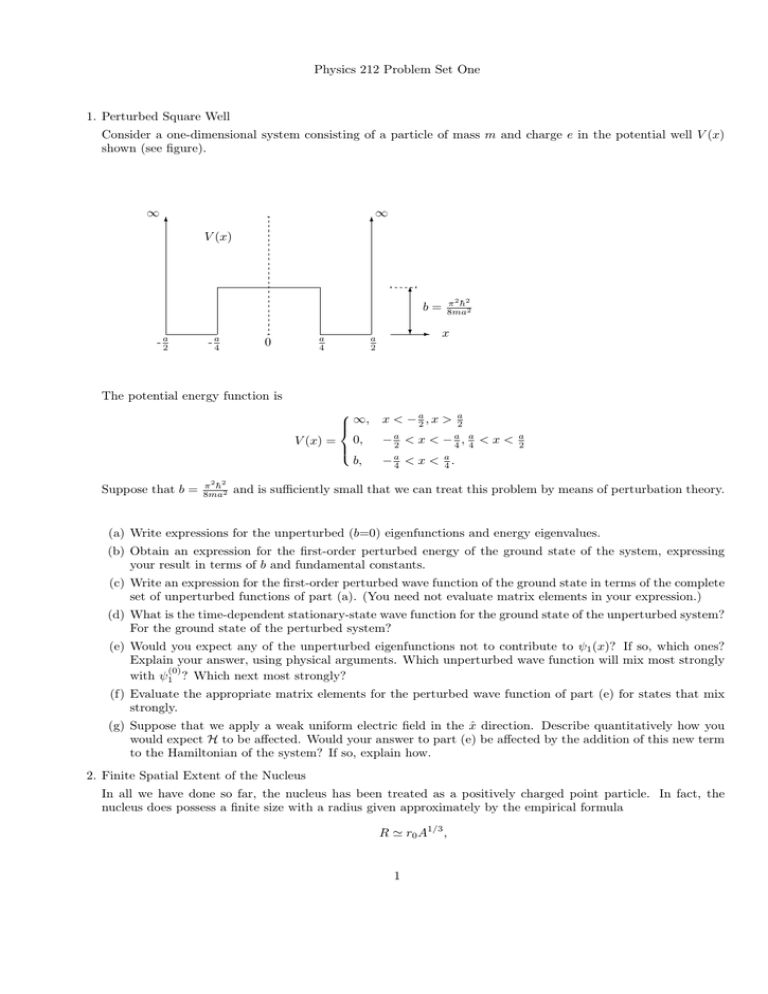
Physics 212 Problem Set One 1. Perturbed Square Well Consider a one-dimensional system consisting of a particle of mass m and charge e in the potential well V (x) shown (see figure). ∞ 6 ∞ 6 V (x) 6 - a2 - a4 a 4 0 b= ? - a 2 π 2 h̄2 8ma2 x The potential energy function is ∞, x < − a2 , x > a2 V (x) = 0, − a2 < x < − a4 , a4 < x < b, − a4 < x < a4 . Suppose that b = π 2 h̄2 8ma2 a 2 and is sufficiently small that we can treat this problem by means of perturbation theory. (a) Write expressions for the unperturbed (b=0) eigenfunctions and energy eigenvalues. (b) Obtain an expression for the first-order perturbed energy of the ground state of the system, expressing your result in terms of b and fundamental constants. (c) Write an expression for the first-order perturbed wave function of the ground state in terms of the complete set of unperturbed functions of part (a). (You need not evaluate matrix elements in your expression.) (d) What is the time-dependent stationary-state wave function for the ground state of the unperturbed system? For the ground state of the perturbed system? (e) Would you expect any of the unperturbed eigenfunctions not to contribute to ψ1 (x)? If so, which ones? Explain your answer, using physical arguments. Which unperturbed wave function will mix most strongly (0) with ψ1 ? Which next most strongly? (f) Evaluate the appropriate matrix elements for the perturbed wave function of part (e) for states that mix strongly. (g) Suppose that we apply a weak uniform electric field in the x̂ direction. Describe quantitatively how you would expect H to be affected. Would your answer to part (e) be affected by the addition of this new term to the Hamiltonian of the system? If so, explain how. 2. Finite Spatial Extent of the Nucleus In all we have done so far, the nucleus has been treated as a positively charged point particle. In fact, the nucleus does possess a finite size with a radius given approximately by the empirical formula R ' r0 A1/3 , 1 where r0 = 1.2 × 10−13 cm (i.e., 1.2 Fermi) and A is the atomic weight (essentially, the total number of protons and neutrons in the nucleus). A reasonable assumption is to take the total nuclear charge +Ze as being uniformly distributed over the nuclear volume (a) Electrostatics then gives the following expression for the potential energy of an electron in the field of the “finite” nucleus of charge +Ze: ( Ze2 − r , r>R V (r) = Ze2 r2 3 R 2R2 − 2 , r < R. Draw a graph comparing this potential energy and the point nucleus potential energy. (b) Since you know the solution of the point nucleus problem, choose this as H(0) and construct a perturbation H(1) such that the total Hamiltonian contains the V (r) derived above; write an expression for H(1) . (c) Calculate the first-order perturbed energy for a 1s state, obtaining an expression in terms of Z and fundamental constants. Do not assume a particular value for the electron mass. (d) Use your result from part (c) to compare the effect of this finite nuclear-size correction on the ground-state energies of a hydrogen atom and a one-electron carbon ion (Z = 6). Compare the percentage correction to the energies due to the perturbation. Explain your results. 2
